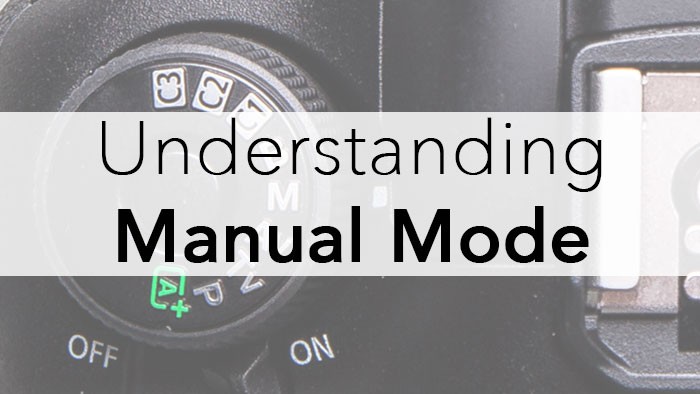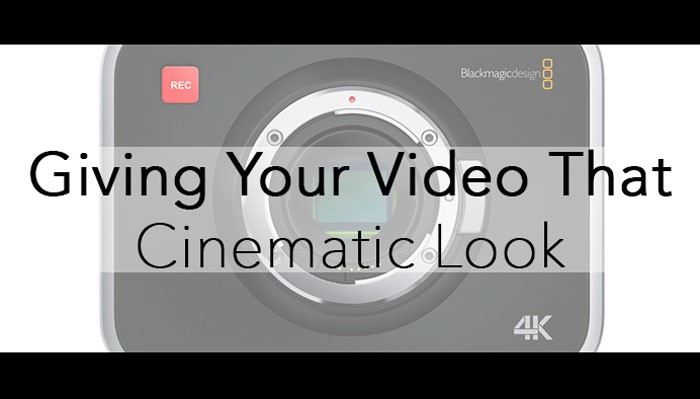In this tutorial video, photographer Ian Norman shows how he processes astrophotography images in Adobe Lightroom. It’s a pretty straightforward process, but he does a great job of explaining how why he is making each adjustment.
Camera Modes: M for Manual

As part of an ongoing look at basic camera settings and features, we now take a look at Manual mode on your camera. It most commonly is available on cameras that have a mode dial and is represented by the ‘M’ on that dial – and it is a powerful camera mode that every photographer should understand. [Read more…]
Giving Your Video That Cinematic Look – Why Understanding ISO Is Just as Important as Having the Right Gear

This article on Giving Your Video That Cinematic Look – Why Understanding ISO Is Just as Important as Having the Right Gear is from guest author Corey Benoit.
From Still to Motion
Like many, my projects require both still and motion images and are often lacking essential light to simplify the production. Switching between the two, I have found that understanding ISO is equally as important as selecting the right gear for your shoot. This article takes a look at ISO and gear for creating cinematic video in low light situations.
The ISO Myth
Many photographers and videographers think that ISO only affects the overall exposure of the image or the light being received by the sensor, and this is a myth. ISO doesn’t just affect the exposure or the lightness/brightness of an image. It basically destroys the color integrity and accuracy. Your greens will take on a lighter shade and will most likely have noise. Reds turn into more of an orangey kind of red, and blues will typically take on a cyan color. Color pollution is a problem with higher ISO. The color matrix will be polluted the more you push the ISO. Not to mention the damage that is done to the black/gray shades. They are polluted very badly with higher ISO. [Read more…]
Watch Joe McNally Explain TTL Flash
In these videos, Joe McNally walks through the basics of TTL flash, including lighting ratios and high-speed sync. He’s specifically talking about Profoto’s Air TTL system; however, these principles apply to smaller speedlights from Canon, Nikon and other manufacturers. [Read more…]
How to Use Advanced Color Tools in Photoshop
In the above video from Phlearn, we learn how to use advanced color tools in Photoshop. Aaron Nace walks through a unique set of tools in the Adobe Color Themes that allow you to choose complementary colors easily.
How to Rim-Light and Light a Black Product Shot on Black Background
Shooting on a black background can create a great, contrasty image. Shooting a black product on a black background, however, can be tough to get right in camera.
This video from Karl Taylor and Broncolor shows us how to properly rim-light a product to create separation from a black background. The video goes on to show how to light from different angles to create or cancel reflections, as well as how to bring in LED lights from a product by extending an exposure time.
How USA TODAY Photographers Shoot the Emmy’s
In this video, USA TODAY photographers Robert Hanashiro and Dan MacMedan talk about how they approach shooting an awards show like the Emmy’s. [Read more…]
How to Shoot Red Wine with Studio Strobes
Here’s another great lighting setup and walk-through from Karl Taylor as he shoots a bottle and glass of red wine.
He starts with setting up the scene to create warm tones and textures. Then he walks through the lighting setup from the background and accent lights up to the key light as he builds the scene.
Obviously, he’s using Broncolor strobes in the setup but the principles apply across the board with cheaper speedlights and strobes as well.
What’s Different When You’re Freezing Movement with High-Speed Sync?
In this short video, Jared Platt shows how to freeze motion using high-speed sync with the Profoto B1 and B2 heads, which work with TTL flash systems on Canon and Nikon DSLRs.
While he demos the Profoto kit, the same rules apply to smaller speedlight kits and other TTL monolights and flash heads. With purely manual flash communication, however, you are limited to the sync speed of your camera (often around 1/200s) and won’t be able to freeze that motion.
35mm Full Frame, APS-C, and 1.0-Type Sensor Depth of Field Comparison
In this short video, Gary Fong takes a look at full frame, APS-C and 1.0-type cameras to see how the depth of field is affected at the same effective focal lengths.
The challenge, of course, is that you must change the actual focal length of your lens to accommodate the same field of view on cameras with different sensor sizes. Invariably, this changes the depth of field so that the camera with the smaller sensor appears to have a much greater depth of field, while the full frame camera has a much shallower depth of field.
Gary’s demo is a nice practical demonstration of how these different camera sensors provide different images when shooting the same scene from the same position.
[via ISO1200]
- « Previous Page
- 1
- …
- 4
- 5
- 6
- 7
- 8
- …
- 32
- Next Page »

